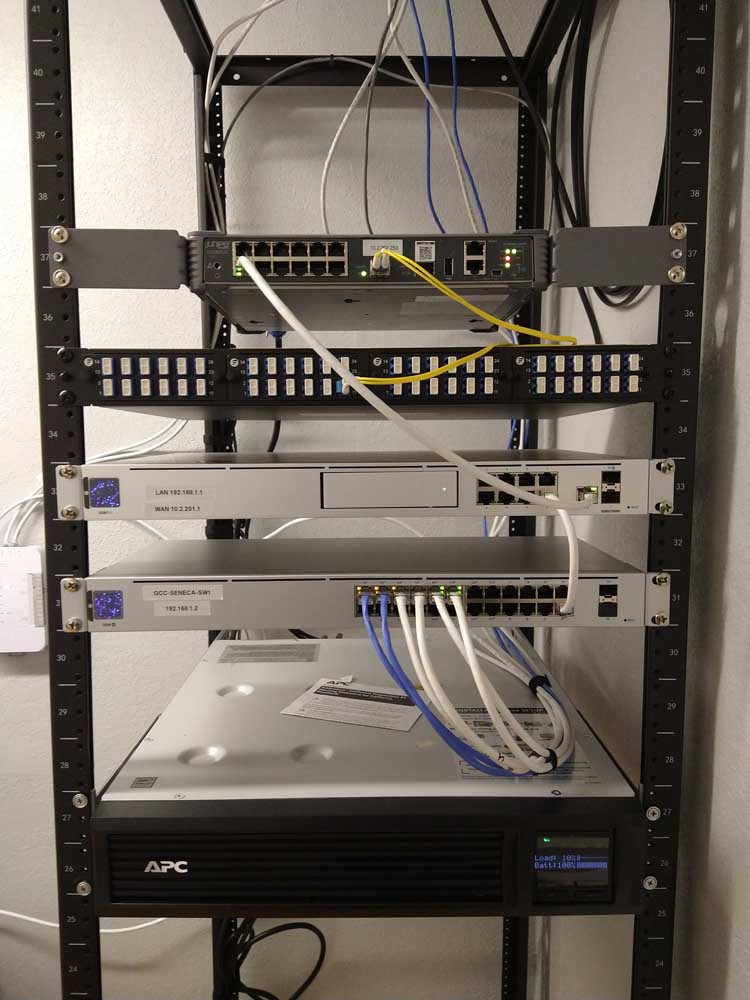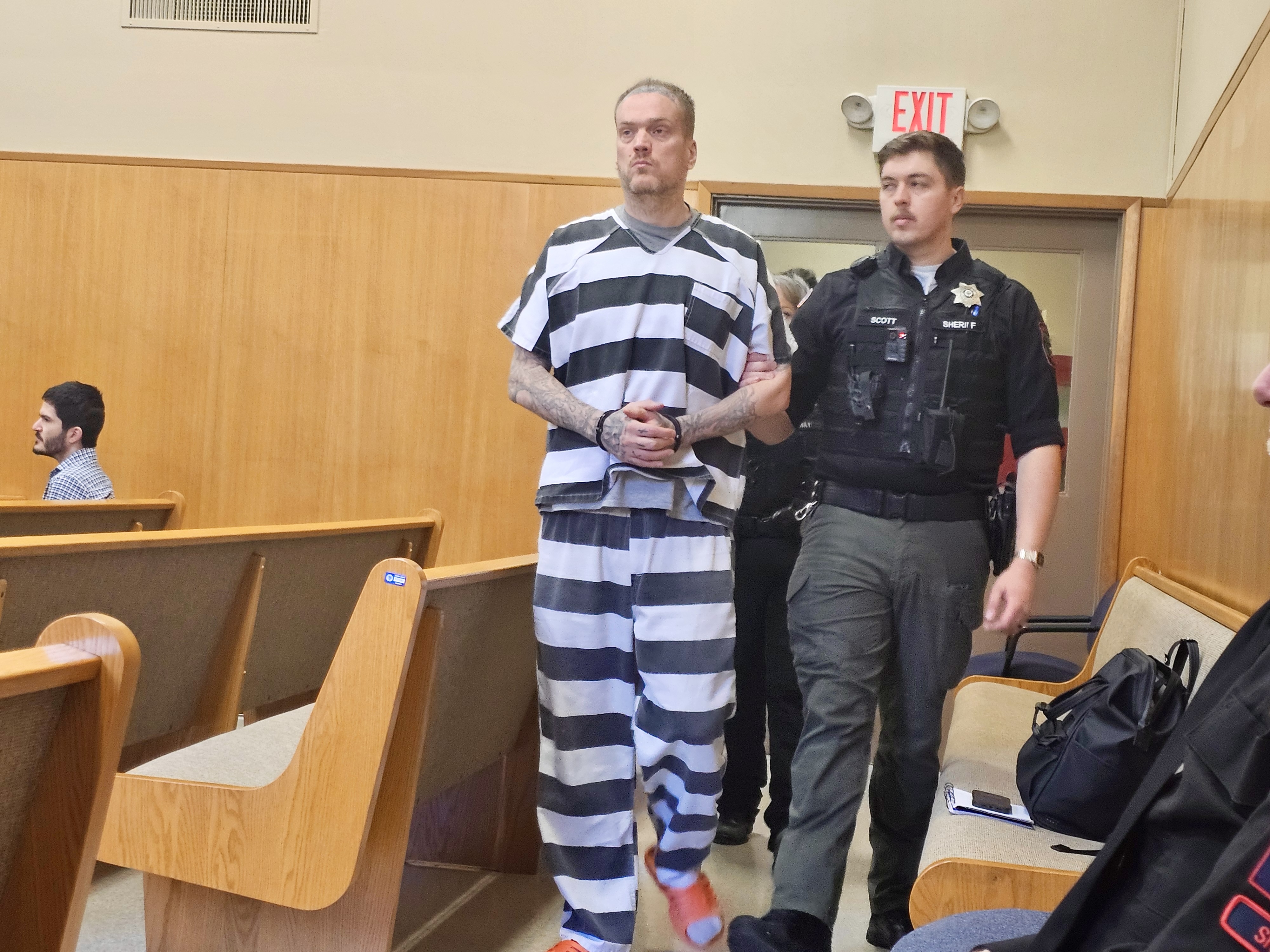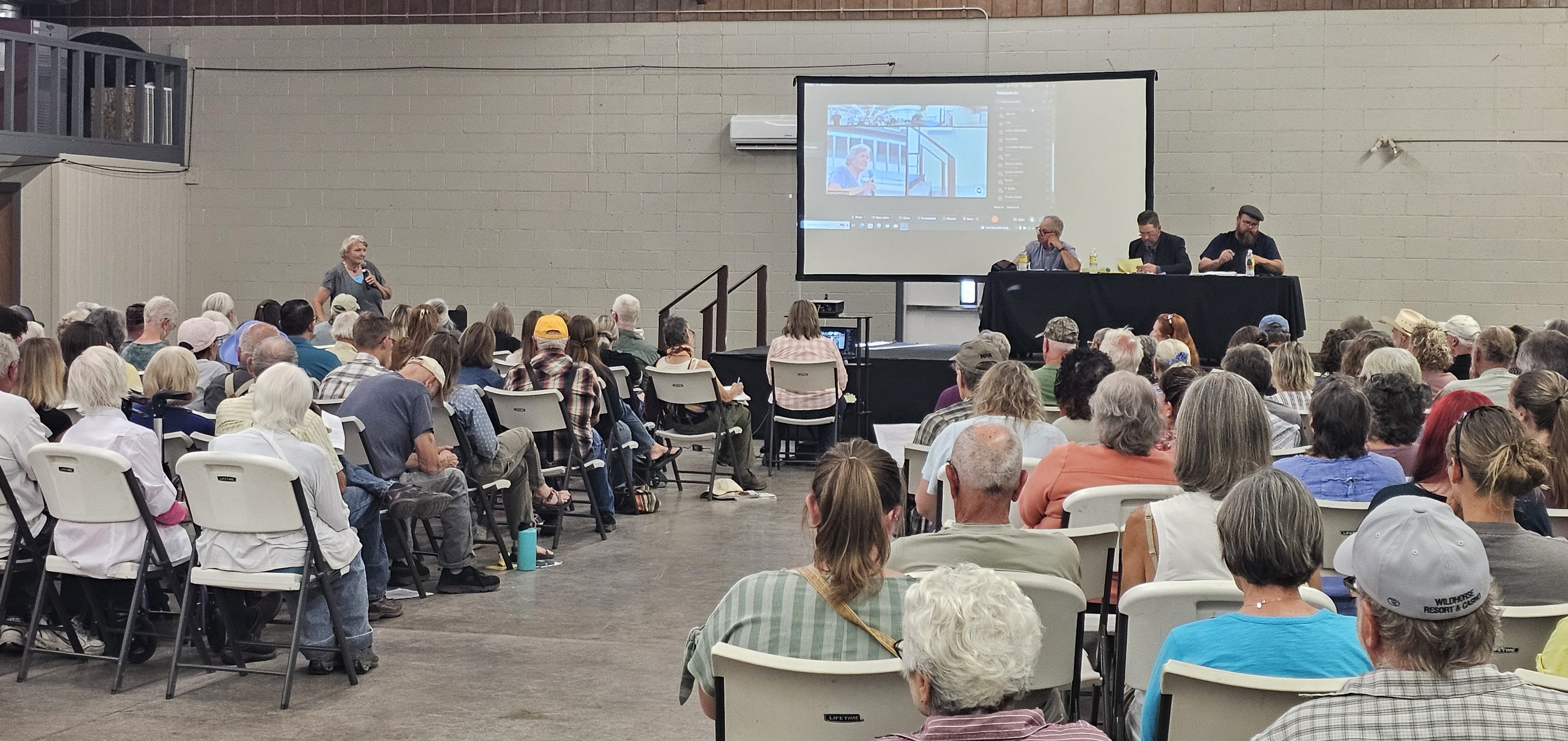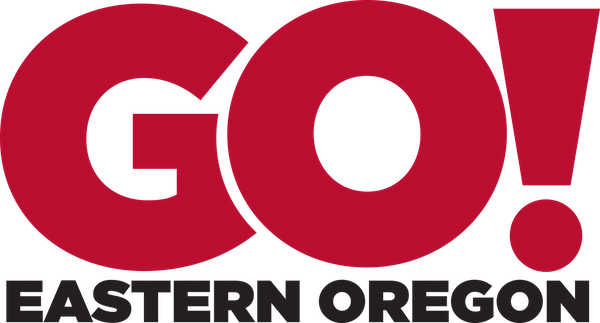Bridging the digital divide: Grant County’s first Cyber Mill brings broadband to Seneca
Published 9:15 am Wednesday, November 24, 2021

- Computer equipment sits on server racks at the Seneca Cyber Mill.
When Logan Stanley moved to Seneca from Boise, she knew finding work would be a challenge. But with the arrival of the Cyber Mill, her options have expanded dramatically.
Trending
The nonprofit facility, which opened Nov. 16 in an 800-square-foot former restaurant building on Highway 395, is providing something that has been sorely lacking for many residents of this small Grant County ranching community: broadband internet access.
Stanley stopped by the Cyber Mill on Friday, Nov. 19, to check the place out and open a free account that comes with a code for the digital keypad for the front door, so she can access the building anytime between 5 a.m. and 10:30 p.m. She’s hoping the facility’s high-speed internet connection will allow her to parlay her political science degree into a good-paying job.
“I’m looking for remote work (and) this gives me access to find work outside the area,” Stanley said. “Having access to the internet is what opens the door to that opportunity.”
Trending
Stanley was just one of several local residents who came in Friday to see what the Cyber Mill was all about. Acting as host, tour guide and chief cheerleader was Didgette McCracken, a founding board member of Cyber Mill Grant County, the nonprofit behind the facility.
The project has been more than two years in the making, and McCracken couldn’t be more excited to see how the people of Seneca make use of it.
“It makes my heart happy,” she said.
It’s a big change for the tiny town of Seneca, population 165, but it’s also a sign of things to come for other isolated communities in this part of Eastern Oregon. Similar projects are already in the works for Prairie City and John Day, and long-range plans call for laying fiber-optic lines that could bring high-speed internet access to every community in Grant County.
All things internet
Think of the Cyber Mill as an internet café without the café (although the building still shows traces of its previous incarnation as a restaurant, and it does have a coffeemaker and a small fridge).
Just inside the front door is a living room-like space with small tables and comfortable chairs scattered around a Western-print throw rug and a large video monitor on one wall. On the other side of the room is a line of work tables with three desktop computer terminals available for public use. Still to come is a scanner/copier/fax machine.
You can still see the old lunch counter, which has now been refurbished as a work surface supplied with several stools.
In the back of the building is a small meeting space, with room for 10 or 12 people, a portable whiteboard and a wall-mounted monitor set up for videoconferencing. The room can be reserved in advance.
There’s also a handicapped-accessible restroom, a utility room for computer servers, and a strong Wi-Fi signal throughout the building for people who want to bring their own laptops, tablets or other wireless devices.
Working at a remote job is just one of the ways people will be able to use the facility, McCracken said.
The conference room can be booked for in-person meetings or classes, or people can use the videoconference capability for business meetings, training sessions or even virtual doctor’s appointments.
Having access to a high-speed internet connection could also enable local artisans to sell their wares via online stores and empower entrepreneurs to launch all kinds of online businesses.
High school students can come in to do their homework or research a term paper, while older students can pursue a college degree through online coursework.
Or people can just come in to hang out, surf the net, watch a movie or connect with others for multiplayer online games.
And for now, at least, it’s all free.
McCracken said Grant County Cyber Mill hopes to keep it that way, but even if the nonprofit has to start charging a user fee at some point, she thinks the cost will remain affordable.
“We’ve run the numbers to see what it would take to become self-sustaining,” she said. “Once you’ve done the upfront costs, it’s very reasonable to operate. If we have to do that, we’ll do that, but we’ve also built in scholarships.”
Life on the frontier
While internet service is available through commercial sources in Seneca, it can be cost-prohibitive for some area residents. Others say their homes are too remote for satellite or DSL service, or the connection they are able to get is slow and unreliable.
“This part of Oregon is considered frontier,” McCracken said. “A lot of people don’t really know what that means, but when it comes to broadband, there’s really not a lot of options.”
Layne and Janelle Jackson, who moved to Seneca from Boston with their son, Luke, said they’ve been frustrated by the lack of reliable internet service at their ranch seven miles from town. The Cyber Mill, they said, could make a big difference for them.
“It’s crazy how bad our internet is,” said Janelle. “We’ve been waiting for this for a long time.”
Luke, a 17-year-old senior at Grant Union High School, brought his X-Box to test out the Cyber Mill’s signal. He hit a few glitches gaming online, but that’s something he can’t do at all with the spotty connection he gets at home.
“It was downloading really good,” he said. “It streamed a couple videos for me. … I probably did in the last hour and a half a day’s worth (of downloading).”
Downloading a full-length movie using the family’s home internet service, Luke added, sometimes takes as long as a week.
His mother said she’ll use the Cyber Mill’s videoconferencing capabilities to schedule doctor’s appointments.
“This is a better option for telehealth meetings, so we don’t have to go to Bend or Boise,” Janelle said.
For now, the Seneca Cyber Mill is piggybacking on the broadband internet connection at Seneca Elementary School, which is tied into the Grant County Education Service District’s wireless internet network. Eventually, McCracken said, that will be replaced by an even more robust and reliable fiber optic cable.
The digital divide
Historically, rural areas have lagged behind big cities when it comes to the infrastructure required for high-speed internet access.
According to a 2020 report from the Oregon Broadband Advisory Council, 95% of the state’s population lives in areas with access to basic broadband service, but those people are concentrated in urban centers. In fact, the report found, nearly half of the census blocks in Oregon lack even basic broadband access. As a result, only 46.1% of rural households subscribe to basic broadband or faster internet service, compared to 64.1% for their urban counterparts.
While some people still think of home internet service as a luxury, it is increasingly viewed as a necessity of modern living. COVID-19 only reinforced that view, as businesses suddenly found themselves forced to rely on remote workers and schools had to pivot to remote instruction.
Even before the pandemic, however, there were widespread calls to bridge the digital divide, not only for low-income households who lacked the means to connect to the net but also for residents of rural communities that lacked the infrastructure to access broadband service.
In 2018, Congress appropriated $600 million to the U.S. Department of Agriculture’s ReConnect Program, which aims to expand broadband infrastructure and services in rural America through grants and loans.
Last year, the Oregon Legislature funneled $10 million from its share of federal COVID relief payments into the Rural Broadband Capacity Program, which awards grants to support infrastructure construction and related projects in unserved or underserved areas of the state.
Private foundations, recognizing the need, have gotten into the act as well.
Some of that money is fueling the push for expanding broadband internet service in Grant County.
In addition to private donations, McCracken said, the primary funding sources for the Seneca Cyber Mill were the Roundhouse Foundation, the Oregon Community Foundation and the Grant County Digital Network Coalition.
Grant County Digital, as it’s known for short, is a government consortium involving Grant County and the cities of Seneca and John Day. The group is currently funded by a $1.8 million state grant with the goal of increasing access to high-speed internet service throughout the county.
To reach that goal, Grant County Digital is partnering with both Grant County Cyber Mill and Oregon Telephone Co. In addition to providing funding support for Cyber Mill projects in its two member cities, Grant County Digital has agreed to provide $1 million in matching funds to Ortelco, which has a $6 million grant from the USDA’s ReConnect Program to extend fiber optic cables from John Day to other Grant County communities that currently lack that crucial element of digital infrastructure.
“They should be starting construction in the very near term,” Grant County Digital Chair Josh Walker told the Eagle. “They plan to be built out to Long Creek and Monument and down to Seneca in 2022.”
Walker said Grant County Digital is keeping an eye out for additional funding sources and could get involved in additional projects that support its mission of bringing broadband internet access within reach of all Grant County residents.
“It opens up the opportunity for folks to move here and make a living here by being able to work remotely,” Walker said. “To keep up with the more urban areas and compete with them, we need to be able to do that.”
More Cyber Mills
The next year should be a busy one for Grant County Cyber Mill. Now that the Seneca location is up and running, McCracken said, the group is turning its sights on opening similar facilities in Prairie City and John Day before the end of 2022.
Both new Cyber Mills will offer all the same basic services as the one in Seneca, she added, but each will have its own personality.
“Every community has its own needs,” McCracken said.
“While we want this sort of idea everywhere, we know the amenities are going to look different in every place.”
Grant County Cyber Mill is currently raising funds to complete both projects and is nearing its goal for the Prairie City site. The John Day Cyber Mill will be a bigger lift because it will require a lot more remodeling, McCracken said, but both projects are more than halfway to meeting their fundraising targets.
As Ortelco’s fiber optic project progresses, McCracken said, there could be opportunities to set up Cyber Mills in other Grant County communities.
Eventually, she’d like to see the Cyber Mill model replicated in isolated rural areas far beyond the county line. She’s already had conversations with Harney County and the city of Condon, and she doesn’t see any reason why it couldn’t work elsewhere as well.
“We want to showcase this to other communities and say, ‘You can do this.’”
WHAT: Cyber Mill Seneca, a nonprofit working, meeting and gathering place with public access to high-speed internet
WHERE: 300 Barnes Ave., Seneca
WHEN: Open 5 a.m. to 10:30 p.m. every day
SIGN UP: To set up a free account and get an access code for the facility, go to https://gccybermill.com/register
NEXT STEPS: The Grant County Digital Network Coalition is raising funds to open Cyber Mill locations in Prairie City and John Day. To contribute or find out more, contact Didgette McCracken at 541-620-1465 or didgette.mccracken@oregonstate.edu.
The Grant County Digital Network Coalition is a consortium of Grant County and the cities of Seneca and John Day. The original version of this story included incorrect information about the member governments and the projects being funded by Grant County Digital. Those errors have been corrected.









